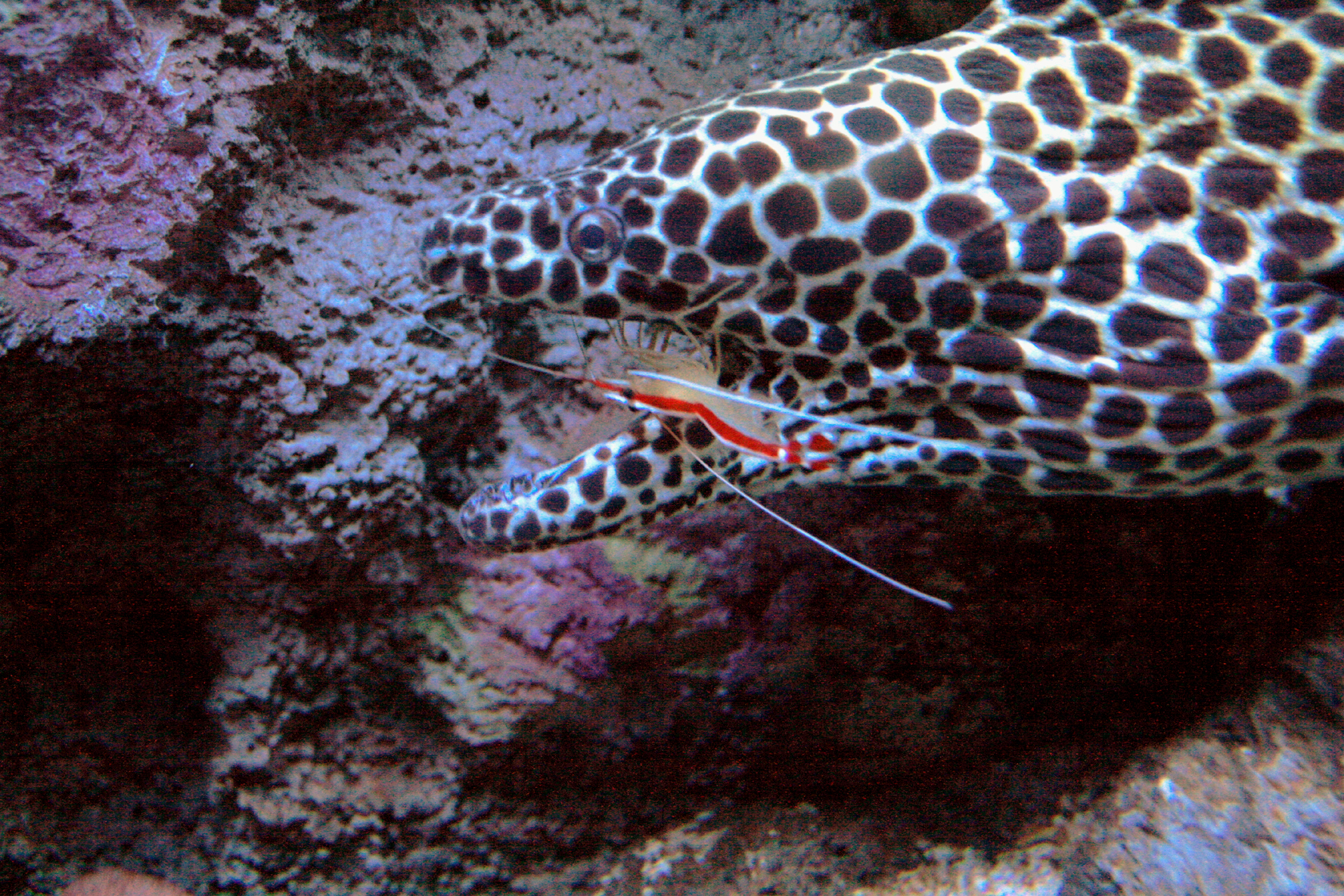Cleaner shrimp on:
[Wikipedia]
[Google]
[Amazon]


 Cleaner shrimp is a
Cleaner shrimp is a

 Cleaner shrimp is a
Cleaner shrimp is a common name
In biology, a common name of a taxon or organism (also known as a vernacular name, English name, colloquial name, country name, popular name, or farmer's name) is a name that is based on the normal language of everyday life; and is often contrast ...
for a number of swimming decapod crustacean
Crustaceans (Crustacea, ) form a large, diverse arthropod taxon which includes such animals as decapoda, decapods, ostracoda, seed shrimp, branchiopoda, branchiopods, argulidae, fish lice, krill, remipedes, isopoda, isopods, barnacles, copepods, ...
s, that clean other organisms of parasite
Parasitism is a close relationship between species, where one organism, the parasite, lives on or inside another organism, the host, causing it some harm, and is adapted structurally to this way of life. The entomologist E. O. Wilson h ...
s. They belong to any of three families, Hippolytidae (including the Pacific cleaner shrimp, ''Lysmata amboinensis''), Palaemonidae (including the spotted '' Periclimenes magnificus''), and Stenopodidae
Stenopodidae is a family of decapods in the order Decapoda. There are about 6 genera and more than 30 described species in Stenopodidae.
Genera
These six genera belong to the family Stenopodidae:
* '' Juxtastenopus'' Goy, 2010
* '' Odontozona'' ...
(including the banded coral shrimp, ''Stenopus hispidus'') . The last of these families is more closely related to lobster
Lobsters are a family (Nephropidae, synonym Homaridae) of marine crustaceans. They have long bodies with muscular tails and live in crevices or burrows on the sea floor. Three of their five pairs of legs have claws, including the first pair, ...
s and crab
Crabs are decapod crustaceans of the infraorder Brachyura, which typically have a very short projecting "tail" (abdomen) ( el, βραχύς , translit=brachys = short, / = tail), usually hidden entirely under the thorax. They live in all th ...
s than it is to the remaining families. The term "cleaner shrimp" is sometimes used more specifically for the family Hippolytidae and the genus '' Lysmata''.
Cleaner shrimp are so called because they exhibit a cleaning symbiosis
Cleaning symbiosis is a mutually beneficial association between individuals of two species, where one (the cleaner) removes and eats parasites and other materials from the surface of the other (the client). Cleaning symbiosis is well-known amon ...
with client fish where the shrimp clean parasites from the fish. The fish benefit by having parasites removed from them, and the shrimp gain the nutritional value of the parasites. The shrimp also eat the mucus and parasites around the wounds of injured fish, which reduces infections and helps healing. The action of cleansing further aids the health of client fish by reducing their stress levels. In many coral reef
A coral reef is an underwater ecosystem characterized by reef-building corals. Reefs are formed of Colony (biology), colonies of coral polyp (zoology), polyps held together by calcium carbonate. Most coral reefs are built from stony corals, wh ...
s, cleaner shrimp congregate at cleaning stations. In this behaviour cleaner shrimps are similar to cleaner fish, and sometimes may join with cleaner wrasse
The wrasses are a family, Labridae, of marine fish, many of which are brightly colored. The family is large and diverse, with over 600 species in 81 genera, which are divided into 9 subgroups or tribes.
They are typically small, most of them le ...
and other cleaner fish attending to client fish.
Shrimp of the genus ''Urocaridella
''Urocaridella'' is a genus of shrimps comprising the following species:
*''Urocaridella antonbruunii
''Urocaridella antonbruunii'', common names clear cleaner shrimp or red-white cleaner shrimp, is a species of shrimp belonging to the famil ...
'' are often cryptic
Cryptic may refer to:
In science:
* Cryptic species complex, a group of species that are very difficult to distinguish from one another
* Crypsis, the ability of animals to blend in to avoid observation
* Cryptic era, earliest period of the Earth ...
or live in caves on the reef and are not associated commensally with other animals. These shrimp assemble around cleaning stations where up to 25 shrimp live in proximity. When a potential client fish swims close to a station with shrimp present, several shrimp perform a "rocking dance," a side-to-side movement. Frequency of rocking increases with hunger. This increase in frequency suggests competition
Competition is a rivalry where two or more parties strive for a common goal which cannot be shared: where one's gain is the other's loss (an example of which is a zero-sum game). Competition can arise between entities such as organisms, ind ...
between hungry and sated shrimp. To avoid competition
Competition is a rivalry where two or more parties strive for a common goal which cannot be shared: where one's gain is the other's loss (an example of which is a zero-sum game). Competition can arise between entities such as organisms, ind ...
with other cleaners during the day, the shrimp ''Urocaridella antonbruunii
''Urocaridella antonbruunii'', common names clear cleaner shrimp or red-white cleaner shrimp, is a species of shrimp belonging to the family Palaemonidae. It was described by A. J. Bruce in 1967. It is one of the species that are known as clean ...
'' was observed cleaning a sleeping fish at night.
Cleaner shrimps are often included in saltwater aquaria partly due to their cleansing function and partly due to their brightly colored appearance.
References
{{reflist Decapods Symbiosis